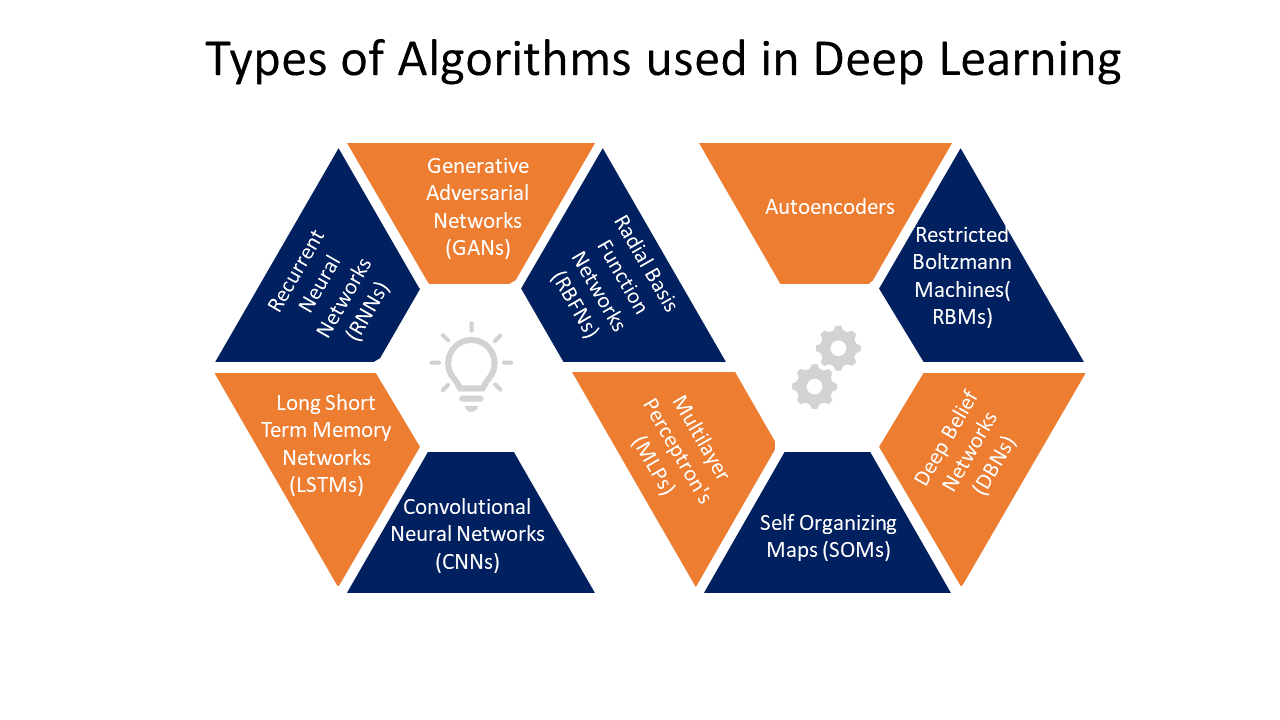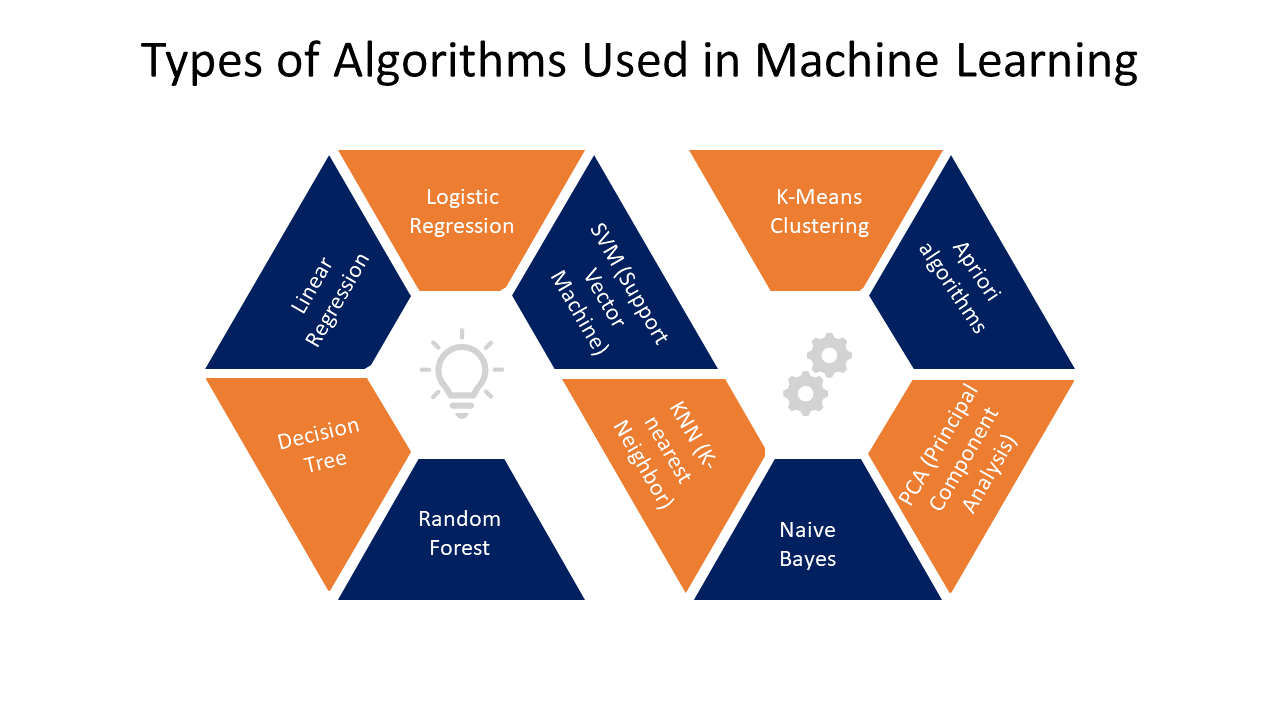Table of Contents
A common debate that you must be familiar with Machine learning vs. deep learning has likely been talked about recently, even if you’re not in the data science field. They are even used synonymously at times. These aren’t just catchphrases for artificial intelligence, despite their similarities they each have their unique meaning.
The main field is artificial intelligence (AI), which encompasses machine learning, deep learning, and other ideas. Machine learning, a subfield of artificial intelligence, includes deep learning. You may visualize them as a set of overlapping concentric circles. To put it another way, AI is not deep learning; deep learning is AI.
Seventy-one percent of consumers think AI raises the quality of service they receive, and they anticipate seeing more of it in day-to-day support interactions, according to the Zendesk Customer Experience Trends Report. Every service organization should integrate AI into their customer service operations given the time and money it saves them. There are several instances of both ML & DL.
These algorithms, for example, made it possible for Tesla to produce self-driving cars, Netflix to offer shows to its members, and Facebook to curate user feeds and provide precise suggestions for tagging images. AI-driven solutions with ML & DL combined can produce innovative tools that push the envelope. Knowing how each one differs from the other is crucial if you want to employ just one. Continue reading to learn why these two ideas are driving discussions about artificial intelligence and how successful firms may use them.
Understanding the Basics of Machine Learning
The study of computer systems that automatically pick up new skills and adjust to new environments without explicit programming is known as machine learning. By manually coding each “decision,” a programmer can use basic artificial intelligence to instruct a computer how to react to different sets of instructions. Computer scientists can “train” a machine by giving it a lot of data by using machine learning models. The machine uses a collection of guidelines, known as an algorithm, to examine the data and make deductions. The ML services can get more adept at carrying out a task or coming to a conclusion the more data it parses. If you’re finding the topic of machine learning complex and time-consuming to grasp fully, you might want to consider delegating your study or assignment work. Many students rely on experts to write paper for me to save time and effort while still ensuring they meet academic requirements.
Here’s an example that you might recognize: streaming service for music Spotify gets to know your taste in music so it can make you new recommendations. The service modifies its algorithms to provide you with more precise recommendations each time you mark a song as liked by finishing it or adding it to your collection. Similarly, machine-learning solutions are used by Netflix and Amazon to provide tailored recommendations.
Don’t Fall Behind. Go on a Path To Innovation with our Machine Learning Services
What is Deep learning?
Deep learning technology can be conceptualized as an advanced and mathematically complex evolution of machine learning algorithms. Understandably, the field has drawn a lot of attention lately given that recent developments have led to previously unimaginable results. Algorithms that evaluate data with a logical structure akin to how a human would make conclusions are known as deep learning technology. Keep in mind that both supervised and unsupervised learning might cause this.
Deep Learning is being applied in many sectors nowadays. For example:
- Deep learning is utilized in automated driving to identify items like people and stop signs.
- The military utilizes deep learning to recognize things from satellite imagery.
- Naturally, deep learning technology is also widely used in the consumer electronics sector.
- Deep Learning algorithms are used by home help systems, like Amazon Alexa, to recognize your voice and understand your preferences.
Analyzing the differences between Machine learning vs. deep learning
Algorithms in use for machine learning are called deep learning algorithms. It might be wiser, therefore, to consider what makes Deep Learning unique in the context of Machine learning vs. deep learning. The structure of the ANN algorithm, the greater data requirements, and the decreased need for human interaction are the answers.
Above all, the difference between Machine Learning and Deep Learning lies in their architectural foundations. Think of Deep Learning as an intricate collaboration between humans and artificial intelligence. It’s like building a complex neural network, similar to how our brains work. On the other hand, conventional Machine Learning techniques, such as linear regression or decision trees, have a simpler structure.
Here are the key points for Machine learning vs. deep learning:
| Aspect | Machine Learning | Deep Learning |
|---|---|---|
| Relationship to each other | Machine Learning is a superset of Deep Learning | Deep Learning is a subset of Machine Learning |
| Data Representation | Uses structured data | Uses neural networks (ANN) |
| Training Hardware | CPU (Central Processing Unit) | GPU (Graphics Processing Unit) |
| Feature Engineering | Explicit human intervention required | Not needed, features automatically detected |
| Model Complexity | Simpler models can run on standard computers | Complex models require powerful hardware |
| Explainability of Results | Results are easy to explain | Results are difficult to explain |
| Typical Applications | Regression, classification, clustering | Image and speech recognition, NLP, autonomous systems |
| Data Requirements | Less data but quality is crucial | Large amounts of data, learn and improve with more data |
Use Cases: Machine Learning vs. Deep Learning
Use Cases: Machine Learning
The typical individual may associate machine learning solutions with futuristic robots taking over the planet, feeling overwhelming, complex, and possibly intangible. We see examples of machine learning every day, whether we recognize it or not, as more businesses and individuals depend on these models to handle ever-increasing amounts of data. It’s fascinating to see how it’s raising our standard of living, enabling certain company activities and industries to be carried out more quickly and efficiently, and identifying patterns that people are likely to overlook. These are a few real-world instances of machine learning in action that add value in a variety of ways, both big and small.
– Facial Recognition
Among the more evident uses of machine learning is facial recognition. Instead of getting name suggestions for their Facebook tagging and mobile photo uploads, users are now instantly authenticated and tagged by comparing and analyzing patterns through facial contour analysis. Additionally, the combination of deep learning technology and facial recognition has proven to be very helpful in the medical field in detecting hereditary illnesses and accurately monitoring a patient’s medicine use. Its range of sectors and applications is continuously expanding.
Product recommendations
Have you ever wondered how companies like Amazon and others can predict what you might like to buy? Or have they made a grave error and you’re wondering how they arrived at the recommendation? Retail targeted marketing groups consumers according to purchasing patterns or demographic similarities, as well as by speculating on what a single person would want based on the purchases of others. This is done through machine learning. Machine learning technology can become uncannily precise by uncovering hidden links in data and anticipating your needs before you even realize they exist, even when some recommended purchase pairings are clear. You might occasionally receive an incorrect recommendation if the data is insufficient but don’t worry—rejecting the suggestion is just another opportunity to gather information.
– Customer service
Customers can be directed to the right customer service agent for assistance using ML, which not only comprehends what they are saying but also their tone of voice. Natural language processing (NLP) and sentiment analysis are used for speech recognition in voice-based requests. Most firms develop chatbots, or virtual agents, on their e-commerce sites to address text-based requests. These chatbots guarantee that clients don’t have to wait and may provide instantaneous responses to numerous consumers at once around the clock, hopefully leading to a more positive client experience.
– Financial Transactions
For instance, fraud detection in banking extensively uses ML & DL by identifying suspicious online transactions and other unusual transactions that call for more examination. Banks use predictive models and machine learning algorithms to decide whom to lend to.
ML is used in many stock market transactions. Huge amounts of stock market data are used by ML & DL to predict trends and make buy/sell recommendations. Algorithmic trading can likewise be carried out by machine learning without human involvement. Algorithms with high volume and speed trading account for 60–73 % of trading activity on the stock market. ML algorithms can save expenses, increase accuracy, forecast patterns, and lessen the possibility of human mistakes.
– Healthcare
Advances in machine learning enabled machines to be trained in pattern recognition, a feature that is being utilized in radiological imaging. AI-enabled computer vision is frequently utilized for early lung cancer detection and mammography analysis. By using machine learning (ML), doctors evaluating mammograms for breast cancer can detect 40% fewer tumors than they do now. Additionally, machine learning technology is trained to identify and categorize malignancies, locate difficult-to-see bone fractures, and identify neurological conditions.
To develop new treatment recommendations, machine learning is occasionally in use to review past patient medical records and outcomes.
- Machine learning technology is used in genome sequencing, gene modification, and genetic research to determine the effects of genes on health.
- ML can detect genetic markers and genes that, in some cases, may have serious adverse effects and that, in others, may not respond to a particular treatment or medication.
- Personalized medication or treatment suggestions based on data can be produced by these advanced analytics.
- ML can expedite the process of discovering and producing novel drugs, which now require complex, costly, and time-consuming testing.
Are You Facing Machine Learning Challenges?
Use cases: Deep Learning
When deep learning introduced voice and images to computers, it made a significant impact on business. Speech recognition, text classification, and image classification are all possible with deep learning software. To put it another way, we are in connection with all near-human actions through computers.
Neural networks are the name for these models. However, their operations are unrelated to the functioning of the human brain. These models are only mathematical structures that teach you how to learn successive data representations. To identify information and anticipate its new representations, DL is frequently used with predictive/probability algorithms.
– Voice Assistants
Voice assistants are commonly found today. Google Assistant, Alexa, and Siri are some of the popular voice assistants. They carry out duties like placing online orders for goods or making appointments by listening to human commands through microphones. Finding out that they comprehend what people want them to perform via DL is interesting.
Natural language processing, sentiment analysis, and speech recognition are the methods that voice assistants employ to comprehend human speech. Specifically, they perform the following action each time someone speaks to them:
- Transcribe the speech
- Separate the speech into phonemes (sounds);
- Put these phonemes together to form words;
- Determine the context; examine the speech’s emotions;
- Convert phonemes to text.
– Voice-to-Voice Translators for Travel & Business
Speakers of many languages will use DL-based speech-to-speech translators. There is a large market for these translators’ services. Voice-to-voice translators are necessary for travel and meetings. Nevertheless, they are largely undeveloped and limited in what they can do. To translate speech to speech, these solutions typically go through three stages.
Google Translator has made a significant contribution to the advancement of speech-to-speech translators. Sentence after sentence, it began translating, maintaining the tone and voice of the original language.
– Text Classification
Another pillar that supports deep learning software is text categorization, which is frequently combined with other techniques. Text is interpreted as an image by deep learning models. Natural language processing began to automatically scan any material found on the Internet, categorize, tag, and/or assign it to a certain category. Emailing platforms began to flag emails as spam as a result. Predictive algorithms are used by developers and marketers to improve text classification and obtain fresh insights. They may now foretell the opinions or movie reviews expressed in social media posts. For media publishers and other businesses that promote celebrities or bloggers, predicting their reactions is extremely valuable as it guides future moves.
Fake News Detection and News Aggregation
You can tailor news based on reader profiles thanks to deep learning models. Combining & filtering news content as per reader preferences as well as social, regional, and economic factors. Classifiers that can identify and exclude skewed and fraudulent news from your feed are possible by neural networks. They also alert you to potential privacy violations.
Self-Driving cars
The concept of self-driving cars that drive themselves is fueled by deep learning models. In reality, deep learning technologies are “learning machines” that use millions of data sets and training to figure out how to behave and react. Uber Artificial Intelligence laboratories are powering more autonomous cars and creating self-driving cars for on-demand food delivery to diversify its business infrastructure. In contrast, Amazon has begun utilizing drones to distribute its goods in a few different parts of the world.
Putting self-driving cars through a range of scenarios to ensure safe driving is a baffling issue that most AI experts are attempting to solve. They can calculate nearby things thanks to functional sensors.
– Natural Language Interpretation
Natural language processing, or NLP, is a significant area where Deep Learning is demonstrating encouraging outcomes. It is the process that makes it possible for robots to learn and understand human language.
But bear in mind that robots find it extremely challenging to comprehend human language. Not only are the alphabet and words a barrier to accurate machine comprehension or creation of human language, but context, accents, handwriting, and other elements also provide a barrier.
Deep Learning-based natural language processing(NLP)tools are addressing many of the problems related to human language comprehension by training computers (Autoencoders and Distributed Representation) on how to respond appropriately to linguistic inputs.
– Fraud Identification
Large organizations in the payment system industry are already experimenting with deep learning for fraud protection and detection, which is another appealing use. Predictive analytics is one tool that PayPal, for instance, utilizes to identify and stop fraudulent activities. “The company shared an exciting update: by using what’s called ‘long short-term memory’—a special kind of neural network that’s good at remembering things—it can get better at spotting unusual patterns in how users behave. This could improve their detection of these odd patterns by up to 10%”. It’s like giving the system a memory boost to catch what doesn’t quite fit in. Any fintech company, insurance platform, banking app, or organization that collects and handles sensitive data needs to have sustainable fraud detection methods. Deep learning has the potential to increase fraud’s predictability and hence make it preventable.
– Customizations
These days, every platform is trying to deploy chatbots to give its users personalized, human-touch experiences. Deep Learning is helping e-commerce giants like Amazon, eBay, and Alibaba to identify enormous revenue possibilities over the holiday season and to provide seamless, personalized experiences like product recommendations, personalized packaging, and discounts. Research dives into even the freshest of markets, serving up products, services, or strategies that click with what makes us tick. Self-service online options are becoming more common, and trustworthy processes are bringing online services that were previously exclusively accessible offline.
Machine Learning & Deep Learning Algorithms
Deep Learning Algorithms

Deep learning is a machine learning and artificial intelligence technique that uses certain human brain functions to make judgments to intimidate people and their behavior. This is a crucial component of data science, channeling modeling based on data-driven methods under statistical and predictive modeling. For an organism to possess the capacity to learn, adapt, and behave like a human, it must be driven by powerful forces known as algorithms.
Neural networks, which are nothing more than a collection of decision-making networks that have been trained to perform a certain function, are the foundation upon which deep learning algorithms are dynamically built. Subsequently, every one of them goes through basic layered representations before proceeding to the subsequent layer. Nonetheless, the majority of machine learning is designed to function pretty well with datasets including hundreds of features or columns. The main reason machine learning models fail to classify a data collection as structured or unstructured is that it cannot identify a basic 800×1000 RGB image. Such depths become very impractical for a standard machine learning algorithm to manage. This is the domain of deep learning.
Deep learning algorithms are essential for identifying features and are capable of managing several operations for both structured and unstructured data. However, because deep learning algorithms require massive amounts of data to operate efficiently, they may overload some jobs that may include difficult challenges. For instance, Imagenet is a well-known deep-learning tool for picture recognition that uses dataset-driven algorithms and has access to 14 million photos. It is an extremely thorough tool that has established a cutting-edge standard for deep learning tools that use photos as their dataset.
Machine Learning Algorithms

Without the necessity for explicit programming, machine learning algorithms are computational models that let computers recognize patterns, forecast, or form opinions based on data. Machine learning development serves as the cornerstone of contemporary artificial intelligence and finds utility in a multitude of contexts, such as recommendation engines, fraud detection, picture and speech recognition, natural language processing, and autonomous vehicles. Mentioned below are the various types of machine learning algorithms.
1. Algorithm for Supervised Learning
One kind of machine learning development algorithm is supervised learning, in which the model or algorithms are trained using labeled datasets. For the algorithm to be able to predict or classify new, unknown data, it must first learn a mapping from the input data to the output labels.
2. Algorithm for Unsupervised Learning
A class of machine learning techniques known as “unsupervised learning” uses unlabeled datasets to look for patterns, structures, or relationships in the data. It accomplishes this by looking at the data’s inherent structure devoid of labels or classifications.
3. Learning via Reinforcement
Through interaction with its environment, an agent that uses reinforcement learning algorithms learns to make decisions one after the other. Based on its behavior, the agent receives feedback in the form of rewards or penalties. Through trial and error, the goal is to identify the best strategies that maximize cumulative rewards over time. Reinforcement learning is frequently useful when an agent needs to learn how to play games, operate robots, navigate a new environment, or make decisions under uncertain conditions,
Unleash the Power of Machine Learning & Deep Learning By Connecting with us
Due to its ability to provide insights and automate decision-making, Machine learning and deep learning have the potential to revolutionize a wide range of industries, including healthcare, banking, retail, and transportation.
Machine learning solutions is a branch of artificial intelligence (AI) that allows a system to learn from its experiences and advance without needing to be fully programmed. To train and produce reliable results, machine learning makes use of data. The goal of machine learning is to create computer programs that can access data and utilize it to learn from one another.
Artificial neural networks and recurrent neural networks are related to deep learning, a subset of machine learning. Though there are many more layers of algorithms in it, the creation of the algorithms is precisely the same as in machine learning models. Collectively, these algorithmic networks are artificial neural networks. Deep learning is like a digital brain twin. It mirrors the intricate web of connections in our brains, thanks to its foundation in neural networks. A3Logics, one of the top machine learning companies, provides affordable, powerful AI solutions. To ensure that A3Logics can handle almost any assistance scenario, the system was designed with the customer experience in mind and trained on billions of customer care data points.
With A3Logics, an AI development company, you can effectively classify support requests according to their level of urgency, automate processes, close knowledge gaps, and assist agents in becoming more productive.
Conclusion
In conclusion, Machine learning vs. deep learning are two related but distinct topics within the larger subject of artificial intelligence. Artificial neural networks are useful in deep learning to extract knowledge from massive and intricate data sets.
The decision between Machine learning vs. deep learning will ultimately come down to the particular issue at hand and the kind of data that is accessible. Before selecting a method to employ, researchers and practitioners should carefully consider the advantages and disadvantages of both domains.
Boost Your Business Efficiency & Profitability With Machine Learning Consulting
FAQ
How do I decide between a deep learning model and a conventional machine learning model for a project?
Several variables affect the choices between deep learning and conventional machine learning models. This includes the necessity for decision-making to be comprehensible, task complexity, processing capacity, and data availability. Conventional machine learning models may be more suitable for simpler jobs or situations with less data. Large-scale data sets or jobs requiring intricate pattern identification are better suitable for deep learning models.
Is it possible to combine deep learning with machine learning in a project?
It is possible to combine machine learning with deep learning in a single project while still utilizing the advantages of each methodology. For instance, inside the same pipeline, a project may deploy deep learning models to perform intricate pattern recognition tasks. At the same time, use machine learning models for data pretreatment and feature engineering. For some issues, this hybrid technique can maximize efficiency and performance.
Are deep learning or machine learning models susceptible to bias? How to resolve bias?
Indeed, if the data used to train the models is biased, then bias can be seen in both machine learning and deep learning models. Unfair or discriminatory results may result from this. To address AI bias, one must make a great effort to ensure that the training data is representative and diverse. Additionally, one must frequently evaluate the model’s outputs for bias and use strategies such as algorithmic fairness approaches to mitigate any biases.
How do you qualify for working in machine learning and deep learning?
Work in the fields of deep learning and machine learning typically requires a strong foundation in the following:
- mathematics particularly in statistics, calculus, and linear algebra.
- programming (Python is most popular due to its extensive ecosystem of data science libraries); and
- a solid understanding of the algorithms and underlying principles of machine learning and deep learning models.
We also highly value research contributions or activities that offer practical experience.
What part does improving deep learning models with data augmentation play?
Data augmentation is a technique that uses random modifications (such as scaling, rotation, and cropping) on the preexisting data to increase the diversity of your training set. By doing this, overfitting is less likely to occur and it also enhances the model’s capacity to generalize from training data to fresh, untested data. It is particularly helpful in fields where diverse samples are advantageous for deep learning models.






